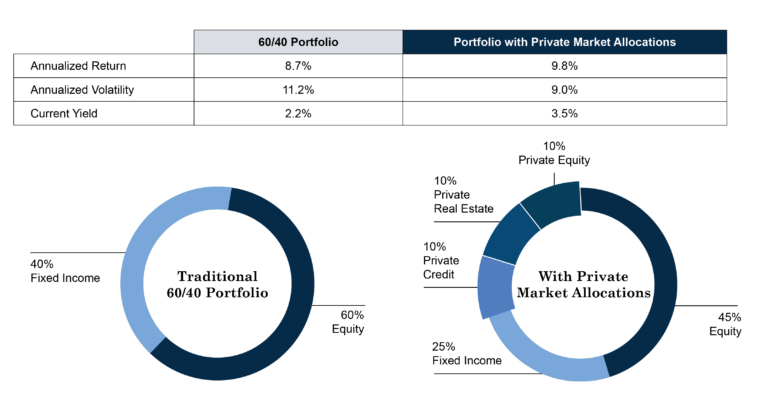Achieve Your Investment Goals with Private Assets
Private Markets Investments Provide a Solution
Benefits of Private Markets Investments:
Reduced portfolio volatility – Not subject to day-to-day price fluctuations of public markets, private market investments may lower overall portfolio volatility.
Enhanced diversification – Private assets offer lower correlations with traditional public markets, smoothing overall portfolio returns and mitigating volatility.
Potential for attractive returns – Private market assets are not immediately tradable. This “illiquidity premium” provides a unique advantage and may result in higher long-term returns compared to public markets.
Allocating to Private Markets | An Illustration
2016-2023 (Earliest Common Available Data)

A Note on Risks
While providing various important benefits, private investments also carry some additional risks, which could be different from the risks associated with investing in public markets. It is important for investors to work with financial professionals who understand private markets and are able to make active investment decisions.
- Market risk – Private market investors may experience differentiated market risk compared to public market investments. Private companies are subject to different disclosure requirements and are sensitive to a variety of factors that may impact valuations differently than public markets.
- Liquidity risk – Private markets funds have varying liquidity profiles, often allowing liquidity on a monthly, quarterly, or less frequent basis. It is important for investors to understand the liquidity characteristics of private market investments before investing.
A Prudent Approach
The time has come for retail investors to apply the model of a pension portfolio to help provide a better overall investment experience of better returns with less risk.
